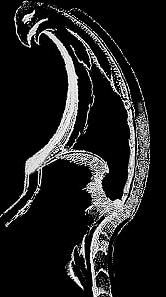 Puppis
Puppis Puppis
Puppis

Particulars:
General:
One of the larger constellations of the southern hemisphere.
The northern border reaches with DECL=-12 degress the equatorial
regions, the southern border at DECL=-51 degrees the polar
regions of the sky. From west to east Puppis stretches
from RA=6h to RA=8h 30m.
Puppis is the largest of four parts which make the ancient
constellation Argo Navis, the ship of the Argonauts. When Argo
Navis was split no reassignment of the star labels took place
so that puppis lacks stars labelled alpha alpha, beta,
gamma, etc. The first star with a greek label is zeta
Pup, a quite interesting supergiant.
The Milky Way runs through this part of the sky making Puppis
an interesting region for observations. Many rich star fields can
be found.
Stars and other objects
The variable star L2 Pup is a red giant which
brightness varies from 3rd to 6th magnitude roughly every 140
days.
V Pup is an eclipsing binary. The components are a B1 main
sequence star and a B3 subgiant. Every 35 hours the brightness
goes down from 4.5 mag to 5.1 mag when the fainter star crosses
the brighter one in the line of sight.
The yellow supergiant xi Pup of 3.34 mag shows an orange
companion when viewed through binoculars.
The double k Pup (a 6255) is a nice pair for small
telescopes. The two blue-white stars are of nearly equal
brightness (4.5 mag and 4.6 mag).
Another pair with nearly equal brightness of its components is n
Pup (b 13). The two 6th mag stars form a wide double.
There are lots of star fields in this region:
The open star cluster M46 is a very rich cluster with more
than 500 stars.
Just about 50 stars belong to M47. This open star cluster
is a good object for binoculars and be seen with the naked eye as
a misty patch under very good conditions.
One of the smaller yet bright clusters is M93 . The about
80 stars form a triangle.
NGC 2451 is a large and scattered group of bright stars.
Nearly at its center there is the orange supergiant c Pup
located.
The planetary nebula NGC 2438 is located at the border of M46.
One of the most beautiful clusters in this area is NGC 2477.
About 300 stars belong to this 3300 lightyears distant group.
Although it looks like being a member of the cluster the
planetary nebula NGC 2438 is not part of it, but
superimposed (see M46 for details). It appears as a
irregular patchy ring at the northern border of M46.
The planetary nebula NGC 2440 lies in a region rich with
stars. NGC 2440 consists of bright condensations of
nebulosity with faint extensions.
The meteor shower Alpha Puppids was discovered 1935 by
Ronald A. McIntosh. This shower seems to be active from 25th of
November to 6th of December. The maximum occurs around 5th of
december.